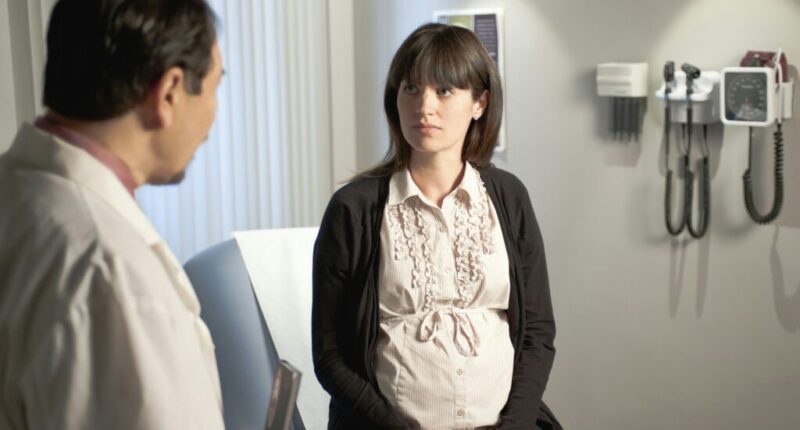The landmark Supreme Court decision in U.S. v. Skrmetti not only allowed states to protect children from predatory “transgender” medical interventions, but also stands as a massive rebuke of the medical “expert” class that kept insisting that mutilating children was good for them.
As Justice Clarence Thomas said in a concurring opinion, “There are several problems with appealing and deferring to the authority of the expert class,” including that they absurdly claim that young children are capable of informed consent and that the alleged “evidence” for the “transition” interventions was “questionable” at best and the expert class “allowed ideology to influence their medical guidance.”
“This case serves as a useful reminder that the American people and their representatives are entitled to disagree with those who hold themselves out as experts, and that courts may not ‘sit as a super-legislature to weigh the wisdom of legislation,’” he added.
The U.S. Department of Health and Human Services (HHS) did its own review of the “transgender” medical requirements advocated by these “experts” and found that the evidence was either nonexistent or shoddy, flying in the face of expert-class deception.
The “transgender” issue is hardly the only area in which so-called experts attempt to unilaterally control what is and is not allowed to be true.
The abortion industry and contraception are similarly untouchable, according to the expert class, and medical evidence is warped in order to perpetuate access and advocacy for them.
Using the door opened by Skrmetti and HHS, it is time to finally be honest about the connection abortion and contraception have with an increased potential for breast cancer. Even though, as Dr. Donna Harrison, director of research at the American Association of Pro-Life OB-GYNs (AAPLOG) told The Federalist, the connection is obvious to any doctor, the mere fact that it would put abortion and contraception in a bad light means that women are apparently not allowed to know that the two put them at much higher risk for breast cancer.
“Anything that touches abortion is a no-go. If you want to talk about the any kind of a bad side-effect from abortion, like death, like infertility, like increased preterm birth, like women dying from ectopic pregnancies — all of that, which makes complete common sense to any OB-GYN practitioner — that’s all shut down for conversation,” she said. “It’s not allowed because it besmirches abortion. And for some reason, many of the major medical organizations have just made abortion the sacred cow. You just can’t say anything bad about it, or you get shut down.”
The medical reality behind the connection is actually uncontroversial (or at least it should be), and is entirely based on fairly basic natural breast development.
As Harrison explained, women go through a similar process of breast development during a pregnancy as they do during puberty. Breast development starts with increased exposure to the estrogen hormone, which starts developing immature tissue called Type 1 and Type 2 tissue. Harrison likened these types of tissue to stem cells, and not yet “terminally differentiated,” meaning they are stable and in their final form.
The vast majority — 99 percent — of breast cancers arise from Type 1 and Type 2 tissue.
During the first half of a pregnancy, the breast similarly is exposed to a large amount of estrogen, producing more Type 1 and Type 2 tissue, in order for the breast to double in size. At the same time, it takes 20 weeks for the placenta — where the unborn baby is connected to the mother — to begin making another hormone called human placental lactogen: The milk production hormone.
Human placental lactogen causes about half of the Type 1 and Type 2 breast tissue to turn into Type 4 (milk producing) and later Type 3 (after milk production) tissue. Both of those types of tissues are permanently cancer resistant, and over time, more and more of the breast gets converted to Type 4 tissue as the baby grows. By 35 weeks, half the breast has converted to milk production tissue, and by the time the baby is full term, 90 percent of the breast is converted to milk production.
Any term pregnancy will result in the production of cancer-resistant tissue, with each successive one lowering the risk by 10 percent.
“The single most important risk factor that a woman has is what was the age of a first term pregnancy,” Harrison said. According to AAPLOG’s guidance, “For each year after age 20, a woman who delays a full-term pregnancy increases her risk of premenopausal breast cancer by 5% per year, and postmenopausal breast cancer by 3% per year. These facts are not controversial and are acknowledged by all medical organizations.”
Abortion
“If [a woman] chooses to end her pregnancy with an induced abortion, she will necessarily have an increased risk of breast cancer because of three factors: (1) She will lose the benefit of a full-term pregnancy at her current age. (2) She will delay a full-term pregnancy until an older age or have no or fewer full-term pregnancies. (3) She may also have a premature delivery before 32 weeks in a subsequent pregnancy due to increased risk of preterm delivery after abortion,” AAPLOG’s guidance states.
With the rate of Type 1 and Type 2 tissue production increasing during the early stages of pregnancy, it makes sense, then, why an abortion would increase the possibility of breast cancer: If a woman arrests a pregnancy before the baby is full term, they are stuck with an increased amount of immature, cancer-causing tissue which will no longer convert to cancer-resistant tissue. That potential increases the closer a woman is to 20 weeks in a pregnancy before getting an abortion because more tissue is created over that period of time.
The vast majority of abortions occur prior to 20 weeks. Abortionist don’t want women to know this connection because “They are so blindly committed to abortion that they won’t allow any amount of factual information to interfere with that blind commitment, and that’s very disappointing, because they could be honest — they are responsible to be honest — with women patients. That is their fiduciary, and they have abandoned it for the blind passion of aborting as many children as possible,” Harrison said.
Another concern is that the abortion industry is adamant that women do not receive informed consent about the procedure.
“If a woman finds herself facing an unplanned pregnancy, she should be aware that if she chooses to continue her pregnancy and has a full-term birth or one that lasts at least 32 weeks, she will lower her risk of breast cancer,” AAPLOG’s guidance states.
But the abortion industry and its supporters are actively trying to thwart any kind of informed consent by funding bogus reports falsely claiming that abortions are perfectly safe and have virtually zero side-effects, despite evidence that it negatively affects mental and physical health, comes with numerous complications and regret, and not to mention that it kills another human being.
One such 2018 report, funded by the Hewlett, Packard, and Buffett foundations (all major advocates for killing unborn babies) “concluded that abortion has no long-term adverse effects and it specifically does not increase the risk of preterm delivery, mental health disorders or breast cancer,” AAPLOG said.
Conveniently, the report used just three studies out of 75 available, and of the 72 that were not used, 60 showed the connection between abortion and breast cancer, and 36 of them show statistical significance in the 95th percentile, according to AAPLOG.
At the same time the abortion industry is trying to lie about the connection by producing bogus reports, it has also been fast at work attempting to discredit legitimate studies showing the connection.
Memory-holing studies that show the dangers of abortion is the modus operandi of the abortion industry, which last year successfully got medical journals to retract studies in order to block true information about the dangers of the abortion pill (mifepristone) before the Supreme Court considered a challenge to the Food and Drug Administration’s (FDA) approval of it.
A 1996 analysis of 23 published studies on the connection of abortion with breast cancer found a 30 percent increase of the risk.
Professor Joel Brind, the primary author of that analysis, found no success proliferating this information in the United States, and in the early 2000s went to London in order to find people who would not ignore the work, as the Catholic Herald reported. At the time, the United Kingdom had seen an 80 percent increase in the rate of breast cancer since 1971, which coincided with an increase in abortions from 18,000 to over 200,000.
Abortion supporters quickly locked into gear in order to produce a study from Oxford University used to “debunk” the link between abortion and breast cancer, which Brind has said is a flawed study.
Contraception
It’s not just abortion. Different types of contraception increase the risk of breast cancer as well — and even brain tumors and seizures, according to a lawsuit filed in early June by recipients of the injection-based contraceptive drug medroxyprogesterone (brand name Depo-Provera).
That lawsuit came after a study was published in 2024 showing women who use it for over five years are five times more likely to get a meningioma, which is the most common kind of brain tumor.
However, a study out of Oxford University in 2023 showed that “any type of hormonal contraceptive may increase risk of breast cancer.” Progestogen-only hormonal contraceptives (which is the latest in contraceptive pill technology and prevents ovaries from releasing eggs each month) can increase risk of breast cancer by 20-30 percent, the study found, and it noted that other studies have found the combined pill, using estrogen and progestogen, can also increase risk.
“Yes, there is an increase here, and yes, nobody wants to hear that something that they’re taking is going to increase their risk for breast cancer by 25 per cent,” Gillian Reeves, Professor of Statistical Epidemiology and director of the Cancer Epidemiology Unit at the University of Oxford, said.
That is because, as Harrison told The Federalist, “Oral contraceptives have estrogen-like compounds in them, and they do exactly the same thing that an early pregnancy does, which is stimulate breast tissue without the possibility of terminal differentiation, without the possibility of maturing to milk production.”
Setting The Stage For Review
Whether women know about these risks before starting to take birth control or obtain an abortion is “hard to say,” Harrison said, adding that it is really up to the individual doctor to be honest about the risks.
The fact remains that millions of American women take some form or birth control, and over one million abortions are performed per year, according to 2023 data from the Guttmacher Institute — the research wing of abortion giant Planned Parenthood — 63 percent of which were obtained through the abortion pill.
All of them are more susceptible to breast cancer than they normally would be.
Just like HHS did with the transgender lies, it is time for them to take to task the cover-up behind breast cancer risk and its connection to abortion and contraception.
Breccan F. Thies is a correspondent for The Federalist. He previously covered education and culture issues for the Washington Examiner and Breitbart News. He holds a degree from the University of Virginia and is a 2022 Claremont Institute Publius Fellow. You can follow him on X: @BreccanFThies.









